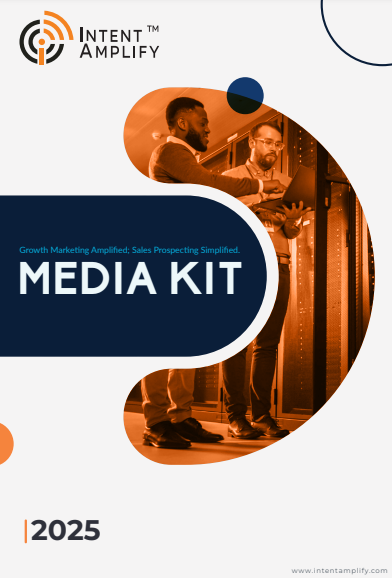
Relationship Marketing: The Future of B2B Lead Conversion
- Last updated on: July 22, 2025
In B2B lead generation, relationship marketing is not an afterthought. It has become the new standard for high quality B2B leads to be generated, developed, and converted.
In contrast to old-school tactics that reduce leads to a transactional level, relationship marketing prioritizes long-term value. It prioritizes people over pipelines. And in return, it produces leads that close faster, stick longer, and drive actual revenue growth.
The revolution is already here. Innovative sales and marketing leaders aren’t simply optimizing funnels, they’re investing in relationships that yield credibility. And they’re converting at higher rates as a result.
This modern strategy considers why relationship marketing is transforming B2B lead conversion, and what today’s teams need to do to remain at the forefront.
What Is Relationship Marketing?
Relationship marketing is an action-oriented strategy that puts long-term trust ahead of short-term transactions. It is the disciplined process of creating lasting, value-based interaction with customers and prospects, long before, through, and well after the moment of sale.
In contrast to conventional marketing, which focuses on acquisition metrics and conversion strategies, relationship marketing is concerned with gaining credibility, staying relevant, and mutually creating value throughout the entire buyer lifecycle. It is not campaign-centric. It is commitment-centric.
At its essence, relationship marketing understands that in sophisticated B2B situations, the most qualified leads are not simply caught, they are grown. Repeated, substantive engagement creates familiarity and credibility that drives purchase decisions and enhances post-purchase loyalty.
This is not about using a first name to personalize an email. It’s about creating a relationship architecture where trust accrues exponentially over time and where each touchpoint is a demonstration of partnership, not a pitch.
From Transactions to Trust: A Strategic Transformation in Marketing Mindset
The transformation from transactional to relationship marketing is a deeper change in the way B2B organizations think about growth. It’s not tactics alone, it’s values, alignment, and enduring influence.
Here’s what distinguishes relationship marketing:
-
It prefers depth to velocity.
Instead of chasing short-term wins, relationship marketing focuses on extended interaction and long-term value-building. The objective isn’t a quick “yes,” but laying the groundwork for extended business interaction. Brands win their position in the buyer’s consideration set by being there and engaged over time.
-
Customer experience is an ongoing dialogue.
Every touchpoint is adding to the relationship, not just the sale. It’s a shift away from conversion-driven to connection-driven. Rather than seeing communication as a step toward an end, relationship marketing uses each interaction as an opportunity to reinforce value, alignment, and trustworthiness.
-
Trust becomes the new motivator, replacing urgency.
Rather than pushing hastened closings, credibility that influences decision speed organically is where the emphasis lies. Buyers are more apt to convert when they trust rather than feel pressured. Trust reduces the emotional hurdle to commitment, particularly in protracted, convoluted sales cycles.
-
The company operates in concert with customer value.
Relationship marketing is not a sales or marketing function. It is holistic, where service, quality, and customer experience are shared responsibilities. Across the first touch point to after-sales support, all departments have the responsibility of building the relationship and providing consistent value.
-
Perceived values matter more.
Customers respond to solutions that assist them in achieving their long-term goals, and not to what the product is doing this week. What your brand stands for and how you show up, matters more than a list of product features. Alignment triumphs over advantage.
-
Quality is a requirement for a brand.
In this framework, quality isn’t mere production ownership; it’s ownership of whoever the customer interacts with. Each touchpoint has to support quality, from the quality of your content to the promptness of your team. It becomes a competitive advantage that purchasers recall.
For B2B sales teams managing extended sales cycles and complex buying teams, relationship marketing provides something performance strategies cannot: compounding trust. And that’s what converts qualified leads into loyal customers.
How Relationship Marketing Enhances B2B Lead Conversion
The transition from transactional to relationship marketing isn’t theoretical. It provides quantifiable performance benefits.
Whereas traditional strategies tend to count on quantity to propel pipeline, relationship marketing is about maximizing the return from each qualified lead. It’s about producing more from less through trust developed prior to the close.
On lengthy B2B buying cycles where purchasing decisions take weeks or months and are shared among multiple stakeholders, trust isn’t discretionary, it’s the conversion currency.
Let’s see how it happens in real life:
1. Warmer Leads, Higher Close Rates
According to a DemandGen report, 57% of CSOs see account retention and growth as a top-3 priority.
A May 2025 Gartner survey found 73% of Chief Sales Officers now focus on growth from existing customers, indicating that revenue is becoming more driven by trusted relationships, rather than new acquisition.
2. Shorter Sales Cycles Through Pre‑Buy Engagement
In relationship marketing, the sales process doesn’t begin on the initial sales call; it starts a lot earlier, in early digital interactions.
When messaging is delivered consistently, relevantly, and with personalization through targeted emails, account-based interactions, and educational content, it reduces friction. Leads come “pre-sold,” with fewer objections and more stated intent, shortening the length of sales cycles and raising win rates.
3. Lead Quality Via Mutual Fit
Full Circle Insights (July 2025) reports that 85% of marketing teams concur that campaigns targeting account-level personalization greatly enhance pipeline quality, reassuring that relationship-focused assets yield higher lead fit.
4. Increased Customer Lifetime Value (CLTV)
A Forrester report (March 2025 indicates companies that increase customer success and relationship-led experiences realize 20–30% higher retention rates and 35% boost in customer lifetime value than acquisition-only focused companies.
In brief, relationship marketing takes the conversation about conversion from tactics to trust. It raises the level of leads that get into your funnel, speeds their path to purchase, and enhances the long-term economics of each customer relationship.
And in B2B, that’s where the competitive advantage happens.
Core Relationship Marketing Principles in B2B
Relationship marketing is not all about keeping in touch; it’s a strategic framework based on intent, consistency, and value to the customer. Execution will differ by company, industry, and buyer type, but the core principles do not.
These are the pillars of high-performing relationship marketing in B2B:
1. Value Before Ask
The best relationship marketers lead with insight, not offers. Rather than hard-selling messages, they provide content, conversations, and experiences that enable prospects to make smarter decisions.
In practice: Publishing a perspective on a market trend or providing a peer benchmarking report adds value before the initial sales call.
2. Consistency Over Campaigns
Trust is not developed in flashes; it accumulates with time. Relationship marketing relies on consistent, deliberate interaction and not sporadic campaigns. This encompasses ongoing touchpoints that provide insightful relevance, not sporadic outreach when it’s time to meet quota.
B2B customers are much more inclined to interact with companies they’ve watched provide steady thought leadership over several quarters, not isolated webinars.
3. Relevance Is Non-Negotiable
Relationship marketing requires a strong grasp of who your purchasers are, what they’re concerned with, and when they’re concerned. That requires matching messages to pain points, stages, and timing, not personas.
Generic messaging erodes trust. Personal, problem-aware content earns it.
4. Listening Is as Important as Speaking
Successful relationship marketing is two-way. It’s not merely about shouting; it’s about listening for signals. Top-performing teams leverage social listening, buyer intent signals, and live engagement feedback to optimize their strategy.
Listening enables early detection of shifts in sentiment, buying readiness, or objections so marketing can act, not react.
5. Trust Is the Goal, Not the Byproduct
In transactional marketing, trust is incidentally a happy byproduct if things work out. But in relationship marketing, trust is on purpose, intentional, and mission-critical. Each interaction, whether it’s a follow-up email, a thought leadership article, or a product demonstration, is crafted to build credibility.
The true triumph isn’t getting the meeting, it’s becoming the vendor stakeholders want in the room. The best leads are the ones who not only acknowledge your product or service, they value your brand as a business partner.
6. The Whole Business Owns the Relationship
Relationship marketing doesn’t stop at the marketing team. Sales, customer success, product, and even leadership should contribute to the experience. When every touchpoint reflects the same voice and values, the relationship strengthens.
Consistency across departments tells buyers: “We’re aligned and we’re here for the long run.”
These principles aren’t theoretical. They are practical design standards for building a system of trust that drives conversion, retention, and brand equity in high-stakes B2B environments.
Constructing a Relationship Marketing Framework
Moving from transactional tactics to trust-first strategies requires structure for marketing teams. Relationship marketing is intentional and repeatable: it creates value prior to asking, and connection prior to converting.
This framework is based on three strategic pillars: Value-First Content Strategy, Multi-Touch Engagement Across Channels, and Audience Intelligence.
1. Value‑First Content Strategy
Actual relationships start with utility, irrespective of promotion. Spending on content that educates and aligns early lays the groundwork for trust.
“In 2025, the full potential of generative AI as a growth enabler will be tested.” Seth Marrs, Forrester Principal Analyst, mentions, “In 2025, the full potential of generative AI as a growth enabler will be tested.”
Key Elements:
- Develop content answering actual business questions prior to any sales pitch.
- Prioritize depth over frequency; quality thinking pieces trump generic volume.
- Select distribution where buyers interact, LinkedIn, executive newsletters, specialty communities.
- Bring in expert voices, SMEs, and executives to bring gravitas to the story.
Summary: When your content actually aids buyer choices pre-funnel, leads show up aligned and engaged. Then, turn that alignment into engagement.
2. Multi‑Touch Engagement Across Channels
A single asset won’t convert. Relationships are built through multi-layered interactions across channels, each touch intentionally timed and meaningful.
“AI agents now manage routine lead follow‑ups, freeing human marketers to focus on strategy and empathy,” quoted Ariel Kelman, CMO of Salesforce.
Key Elements:
- Design every channel (email, social, events, ads) with a declared journey purpose
- Use layered messaging—begin with awareness, then incrementally move into increasing relevance
- Use voice consistency across touchpoints: from webinars to follow-ups
- Add human touch: personalized outreach by sales or content writers establishes rapport
Summary: Strategic multi-touch is about coordination—not quantity. Coordinated touchpoints build familiarity, speed up trust, and cement brand presence in mind.
3. Audience Intelligence: Know Your Buyers
You can’t create valuable relationships without knowledge. The top teams today transcend titles; they crack buying behavior, emotional drivers, and current intent.
According to Forrester B2B Summit Insight, April 2025, “Buying groups now often involve influencers beyond the core team, marketing must understand the entire network.”
Key Elements:
- Watch buyer behavior: what content do they consume, where they interact, and when they stall.
- Plot emotional and business drivers, pain points, KPIs, stresses.
- Segment by readiness, not company type, to tailor timing and message
- Close the loop with sales, conversational, and demo feedback to perfect your intent model.
Summary: Audience intelligence transforms one-size-fits-all to personal resonance. With it, every message hits the mark and resonates.
Closing Thoughts: Relationships Are the New ROI
Transactional strategies are becoming less effective in today’s B2B environment. Buyers are not only looking for suppliers, they’re looking for partners they can trust. Relationship marketing is not about overwriting your existing playbook. It’s about taking it to the next level. It’s the transition from attention-grabbing campaigns to strategies that get attention.
When trust is your currency, each touchpoint accelerates in value. Leads convert more quickly. Sales cycles decrease. Retention increases. And brand equity is a strategic asset, not a vanity statistic.
Because ultimately, the true return isn’t even in clicks, meetings, or revenue.
It’s in the relationships you forge and the lifetime value they generate.
FAQs
1. How do we begin with a relationship marketing framework?
Begin by auditing current content and buyer experiences, identifying areas of distrust, and refocusing your efforts on value-first interaction. Prioritize quality interactions over quantity.
2. Can relationship marketing make traditional demand generation obsolete?
Not necessarily, it must, however; transform it. Relationship marketing builds upon demand gen by making it more efficient and higher-quality, not merely more voluminous.
3. How do we calculate ROI from relationship marketing activities?
Important metrics are lead-to-opportunity conversion, velocity, CLTV (Customer Lifetime Value), trust-based engagement (e.g., content depth), and impact on multi-stakeholder decision-making.
4. Is relationship marketing scalable for enterprise or mid-market B2B companies?
Yes. With the appropriate content systems, data intelligence, and automation tools, relationship marketing can be scaled across complex buying groups and long sales cycles without diminishing personalization.
5. How does relationship marketing enhance lead conversion rates?
By fostering trust and getting in sync with buying requirements early on, relationship marketing yields warmer leads, shorter sales cycles, and higher-quality dialogues that convert more consistently.



